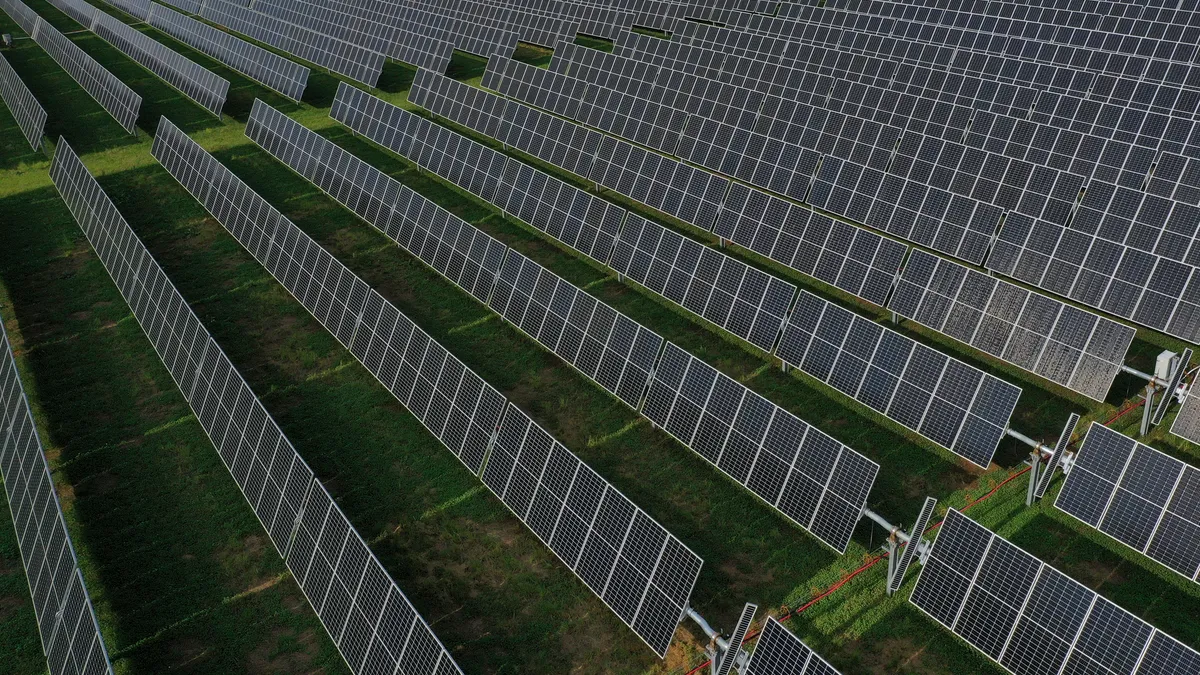Dive Brief:
- The Treasury Department and Internal Revenue Service released Tuesday proposed regulations and clarifying information on the prevailing wage and registered apprenticeship requirements that companies have to meet to qualify for additional tax credits under the Inflation Reduction Act.
- The proposed regulations include a “good faith” exception that allows companies to qualify as having met the registered apprenticeship requirements if they make sufficient attempts to hire apprentices but are unable to do so.
- That clarification comes amid industry concerns about being able to hire registered apprentices due to an overall shortage and the Department of Labor having yet to approve certain renewables jobs for apprenticeships.
Dive Insight:
“ACORE was pleased to see the Treasury Department release guidance on the IRA’s prevailing wage and apprenticeship provisions,” said the American Council on Renewable Energy’s CEO Gregory Wetstone in an email. “We believe this rulemaking supplies much needed certainty on how developers may satisfy these requirements and access full-value tax credits.”
The proposed regulations state that taxpayers will be “deemed to have satisfied” apprenticeship requirements if they have “requested qualified apprentices from a registered apprenticeship program” and had their request denied for reasons outside their control, or if the apprenticeship program fails to respond within five business days.
“The Treasury Department and the IRS anticipate that a taxpayer may need to submit a request to more than one apprenticeship program in order to meet the Good Faith Effort Exception based on the size of the project,” says the proposed rule.
The proposed regulations also provide additional detail on how the Department of Labor’s Wage and Hour Division determines prevailing wage rates for laborers, the process for requesting a wage determination when companies have to pay out supplemental wages, and how companies can issue a correction payment to avoid incurring a penalty fee for underpayment while waiting on a wage determination from the Department of Labor.
“This exception is intended to mitigate a rule that would require taxpayers to make correction and penalty payments for failures to pay a prevailing wage rate that could not be timely determined by the taxpayer,” the proposed rule says.
The renewables industry has been eagerly awaiting guidance on various aspects of the IRA as it moves forward with new investments in manufacturing and production. In the year since the law was passed, the private sector has announced more than $200 billion of investment in clean energy, EVs and batteries, the Treasury Department said in an Aug. 16 report.
Labor questions are of particular interest, as the sector faces shortages in many roles while looking to grow its workforce significantly to meet demand. The Solar Energy Industries Association estimates the solar sector will need to triple its workforce to meet the trade group’s goal of solar providing 30% of U.S. electricity by 2030.
Will White, a solar applications specialist at Fluke who previously provided curriculum and training for Solar Energy International, said the apprenticeship requirement is a “double-edged sword” that requires Labor to expand and clarify the program at the same time as the industry attempts to implement it.
Ben Norris, senior director of regulatory affairs for SEIA, said in an email that the group is currently reviewing the proposed rule and “[appreciates] Treasury’s efforts to clarify how the credits will work.”
“In order to deploy affordable and reliable clean energy at the scale we need to decarbonize the grid, companies need workable regulations that take into account the availability of current apprenticeship programs,” Norris said. “We will continue to work with Treasury to help them understand the challenges companies could face as they comply with these new rules.”














